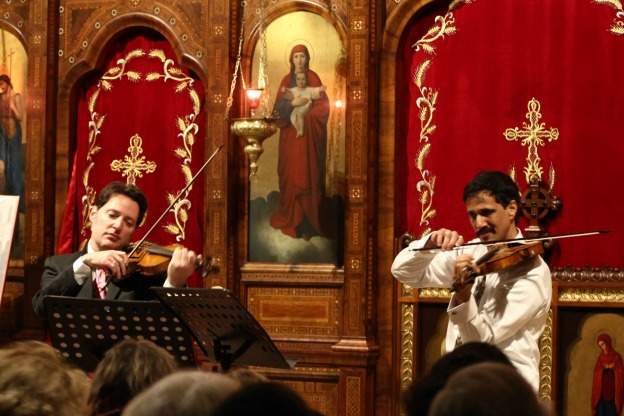
Saint-Sévin/L'Abbe
Generations of violinists owe a codified playing technique in some part to the 18th century violinist Joseph-Barnabé Saint-Sévin. His 1761 Principes du violon was highly influential in its explanations of various left hand techniques like half-position and double stops, bow techniques like pronation and the production of long tones, as well as special effects like harmonics.
But, if you're a violinist and the name Saint-Sévin doesn't sound familiar, it's likely because the Saint-Sévin family was far better known by their nickname L'Abbe-meaning Abbot, or Father. Both Joseph-Barnabe's Dad and his uncle were cellists who took minor vows while working at the church of Saint-Caprais d'Agen. Joseph Barnabé's dad came to be known as L'abbé l'aîné (the older) and his uncle was L'abbé le cadet (the younger). By the time Joesph-Barnabé came on the scene, the nickname had stuck and so he naturally became, L'Abbe le fils…the son.
Duo Le Fils
Taking their ensemble name after this musical family, 21st century violinists Antonin Stahly and Martin Davids are Duo Le Fils. Their new CD introduces listeners to the two suites of opera airs arranged for two violins by L'Abbe le fils and printed in his Principes du violon. Â Until now, these works have never been recorded.
Opera
Although not indicated in their titles, most of these two violin arrangements do come from various Rameau operas, among them Zaïs, Pygmalion, Platée, Les Indes Galantes, Zoroastre, and Dardanus.Â
L'Abbe le fils probably knew these operas like the back of his hand.  A child prodigy, he joined the Paris Opéra orchestra when he was only 16. By the time he published these arrangements in the back of his Principe de violon in 1761, L'Abbe le fils had already played in the opera pit for nearly two decades.
L'Abbe le fils was no stranger to the genre of the violin duet either. In 1741, the young le fils debuted at the Concert Spirituel in 1741, performing one of Leclair's violin duets with his young colleague, the 13-year-old Gaviniès.
Interestingly both suites of L'Abbe le fils opera arrangements close, rather satisfyingly, with chaconnes from the Pieces de Viole of contemporary viola da gamba virtuoso, Antoine Forqueray.









